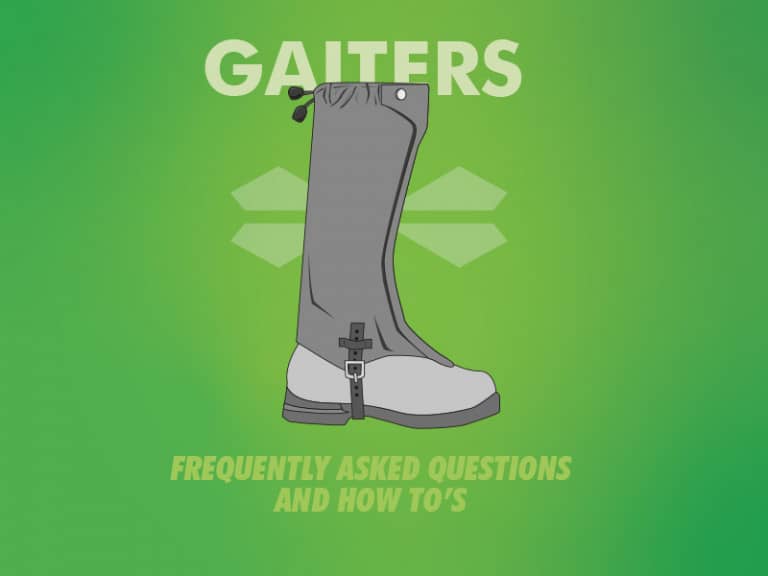Gaiters are useful for multiple reasons, in different circumstances and scenarios. This gaiter guide will help you understand the benefits and
Disclosure: This post may contain affiliate links and if you go through them to make a purchase we will earn a commission. Keep in mind we are partnered with these companies because we believe in the quality and the value, and not because of the commission we might receive. There are no additional costs for you when purchasing through these links, otherwise, we would not link these products. These links will help us cover the costs of the website, thank you for your support!
Contents of the gaiters guide:
- What are gaiters?
- Why gaiters?
- Who should use gaiters?
- When to use gaiters?
- Types of gaiters.
- Materials.
- Gaiter Design Features.
- Conclusion.
If you haven’t heard or used Gaiters before, like us back in the days, you probably have a lot of questions. So did we.
There is some information on gaiters scattered throughout the internet. Yet, a complete gaiter guide with everything in it was still missing in our eyes. Something that makes everything clear in one bundle of content. Hence, the making of the complete gaiters guide.

What are gaiters?
Gaiters are hard to define. Most attributes of gaiters vary; the materials, the body parts they protect, the activity they are designed for, to name a few.
The dictionaries and Google often refer to a covering cloth, or simply just an overshoe,indicating the difficulty of properly describing gaiters.
Basically, a gaiter is a protective sleeve/shell which covers a certain area of your body, most often the upper part of your shoe, the ankle, and the lower part of the leg (below the knees).
In some cases gaiters are protective sleeves for the arms or neck, more on that in the type of gaiters section.
The focus of this blog is the leg gaiter, as it is both the most common type of gaiter when people speak of gaiters, and the most used type of gaiter in the hiking community.

Why Gaiters?
The Early Days - History of gaiters
Gaiters have been around for years, originally designed for personal protective equipment. In a few cases, gaiters functioned as aesthetic apparel, but more commonly as a practical garment.
Gaiters were a must, especially in the times that boots did not rise very high.
Besides keeping dirt and debris from getting into your boots and socks, it also provided support for the ankle. Hence, gaiters used to be (and still are) a valuable clothing item in the army.
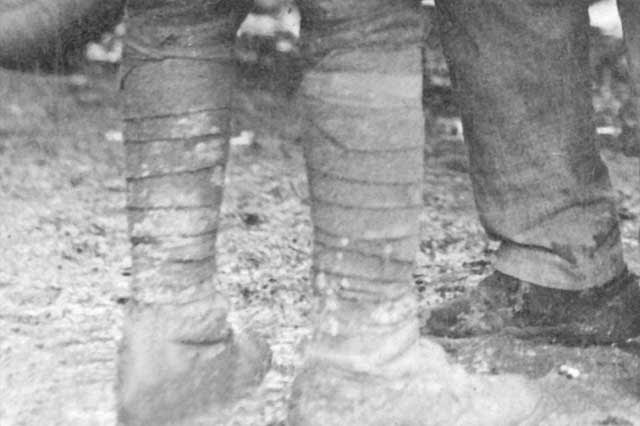
Apart from the army, horseback riders used to benefit from gaiters a lot, as they provided protection when riding through brushy terrain.
Nowadays, the gaiters have developed to cater a variety of users. Different gaiters present different values.
In the case of hiking, gaiters are not in the 10 essentials, but if there was a 11 essentials list, this would be a top contender.
Personal protection
Gaiters provide an extra layer of protection to combat the elements, fight of debris, tiny pebbles, rocks and stones, thorns, leeches, and ticks. This protection comes in handy in many situations.
Imagine all the pebbles and dirt entering your shoes on a long hike. Blisters and suffering guaranteed. Not mentioning the snow or wet underbrush wetting your pants and socks, turning a fun, challenging experience, into an unpleasant discomfort.
The heavier gaiters even protect you against snakebites, which in some climates can come in handy.
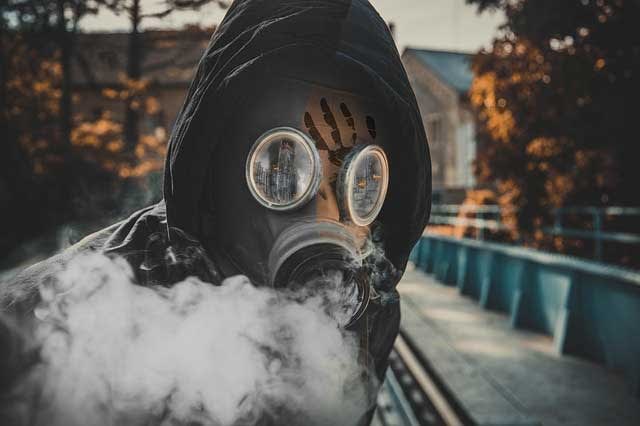
Comfort
In general, gaiters are important for comfort. Sure, protection is the main function, but providing comfort is just as important.
You will not die if some little rocks, sand or other debris enters your boot, nor will you suffer severe injuries if your socks get wet.
But wet socks are no fun. Not at all.
“It isn’t the mountain ahead that wears you out;
it’s the grain of sand in your shoe.”
– Robert W. Service
Of course this quote is meant to be interpreted figuratively, yet the reason the grain of sand in the shoe is used as a reference for a reason.
A bit of sand, or a little rock in your shoe can drive you crazy, why not prevent it from happening in the first place. It can lower your morale, worsen your experience, inflict minor wounds, and make your outdoor experience just uncomfortable.
In line with comfort, the better gaiters are designed to fit seamlessly, are lightweight, and are breathable to prevent too much sweat accumulating.
In short, gaiters are designed for personal protection and provide you comfort during several activities

Who should use Gaiters?
Are gaiters for everybody, and why isn’t it as popular if everybody needs them?
In the hiking community, it’s almost common knowledge, what gaiters are and when to use them.
Still, not every hiker is as enthusiastic about gaiters as others. The climate someone lives in, and the type of hikes someone usually takes, will influence the level of necessity of gaiters.
Beginning hikers, and some hikers who are used to hiking well maintained trails, might have no idea what gaiters are. So it is understandable to question if it is really necessary.
Gaiters are definitely not necessary for everyone, yet everyone can benefit from them, and in some cases it is a must to use gaiters.
Who we would recommend it for:
- All year hikers
- Multiple day hikers
- Thru- / through-hikers
- Rogaining (Rogaining is an orienteering sport of long distance cross-country navigation)
- Trail runners
- Hikers in the more extreme climates in terms of weather conditions
- Hikers who want to be prepared for fighting the elements, like snow

When to use Gaiters?
Admittedly, not all hikes and conditions demand a pair of gaiters.
Deciding on when you should, or when you shouldn’t use gaiters is something you will learn through experience. To help you out on deciding, we address some situations in which we advise you to carry or use a pair of leg gaiters.
Multi Day Hikes
When going on a multiday hike going lightweight is a must, so extra shoes or having multiple pants is not an option. Having extra protective gear to make sure your shoes & pants stay dry is a great solution. Not to forget it helps to keep your lower part of your pants clean what is also a plus for comfort.
If you have a backpack with you it’s easy to bring gaiters along. They are lightweight and don’t take up a lot of space. You just never know what might be on your path.
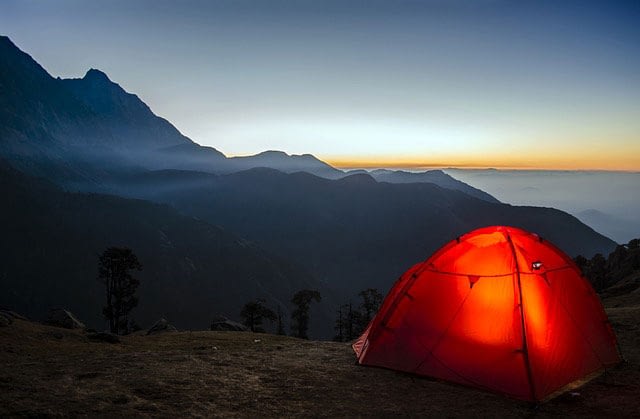
Going off grid
Are you one of those adventurous types who doesn’t like to stay on the marked trails? Gaiters are almost a must, going off the path will sometimes put you in some treacherous terrain.
Gaiters might sound overrated, until you get poison ivy all over your ankles, insect bites, scratches from thorns, wet pants from high grass, and other uncomfortable results of not protecting your lower legs.
Being prepared is always key, preventing this will make your hike more comfortable.
Snowy areas
Snowy conditions? We definitely recommend gaiters. If you live in a snowy climate, chances are you own a pair of gaiters to prevent snow from entering your boots. Wet socks are no fun, and very uncomfortable on hikes.
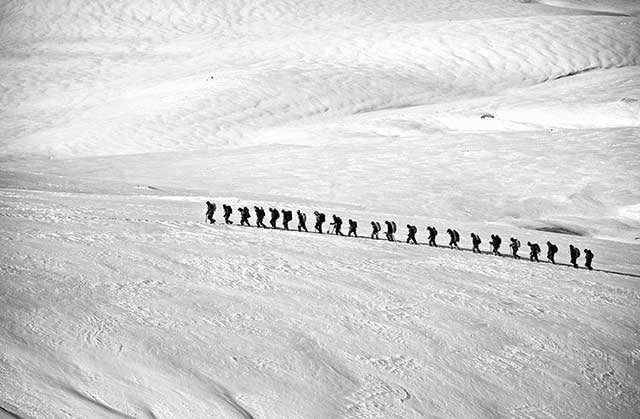

Types of Gaiters
As explained, gaiters are designed to meet specific needs. To avoid confusion it is handy to know what type of gaiter suits what needs, before you start aimlessly looking at all the gaiters available on the market.
This section will highlight different types of gaiters with brief descriptions to clarify the types and what it is most commonly used for.
- Low Gaiters
- Medium Gaiters
- Full-length Gaiters
- Other Gaiters
Low Gaiters
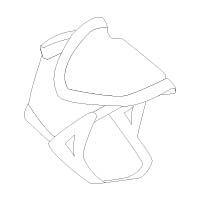
Low gaiters, or ankle gaiters, are the lightest pair of gaiters you can get. They are focused on the essentials of gaiters; keeping debris out of your shoes.
Often they are designed with the trail runner target group in mind, as they want protection, but don’t want anything extra preventing their performance.
However, some long distance hikers also like these, as they want the lightest pair of gaiters possible.
We recommend these type of gaiters if you are a trail running enthusiast.
What?
Small piece of protection around the ankles, most of them light enough to make you forget you even have them on.
For Who?
Mainly for trail runners, providing protection for a variety of environments, like sandy, muddy or debris-heavy trails.
Ideal if you need the most light-weight item to prevent debris from entering your shoes, and sometimes ankle support.
Features
- Small
- Lightweight
- Ankle height
- Keep out trail debris
- Basic gaiter features
Mid-Calf Gaiters

Medium gaiters, or mid-calf gaiters, are pretty similar as low gaiters, because they also offer protection against rock abrasion and water.
The medium gaiters are great for tame conditions when you just need to keep trail debris, mud, sandstones and rain out of your boots.
Because we all know having foreign objects in your shoe is the worst.
What?
Gaiter reaching up to mid-calf, similar to low gaiters, with usually the extra benefit of better protection against the elements, like rock abrasion and water.
For Who?
For people who want a lightweight but tough gaiter, that is mid length cut so you won’t lose the freedom of movement.
It is also a great option if you want to keep it cool but still want some protection.
Features
- 20-30 cm (8-12 inches) tall
- Lightweight
- Mid-calf height
- Keep out trail debris
- Minor protection against the elements
- Basic gaiter features with some extras
High Gaiters

High gaiters, also known as full length gaiters, are the most common type of gaiters when it comes to hiking.
Compared to the low- and mid-calf gaiters, the high gaiters provide a superior level of protection. On the downside, they also weigh more and are sometimes less comfortable than their smaller counterparts.
What?
Superior all-round gaiter for good overall protection. Protects a big part of the lower leg against the elements.
For Who?
The high gaiter is for people who are looking for good protection for various conditions.
Features
- 38-45 cm (15-18 inches) tall
- All-round protection
- Knee height
- Keep out debris, snow, and such
- Additional gaiter features like insect repellent
Other Gaiters / Gaiter types
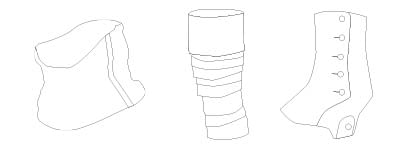
Alpine Gaiters
Alpine gaiters are high gaiters which offer even better protection than the regular high gaiters. Typically desinged for mountaineering and snowshoeing, Alpine gaiters are the thickest and toughest gaiters of the bunch.
They are for extreme conditions providing heavy-duty protection and add some insulation for more warmth. Alpine gaiters and help you in the fight against extreme conditions.
Neck Gaiters
Neck gaiters are an excellent piece of equipment, useful for many situations. They have a flexible coverage, being able to protect your ears, face, nose, throat and head.
A few big benefits over regular scarfs are the versatility, fitting and the hands free usage, making it way handier for hikes.
The gaiter provides coverage for both hot and cold weather, where it can be worn in different ways.
In the winter it will help you stay warm, in the summer to keep out insects.
Spats
Spats, a shortening of spatterdashes, or spatter guards are a distinct from gaiters.Made of white cloth, grey or brown felt material, spats buttoned around the ankle.
You might now spats from Michael Jackson, as he wore them in the Smooth Criminal clip.
The spats were worn by men (more commonly) & women in the late 19 century.
Since the mid-19th century, soldiers of various nations, especially infantry, often wore leggings or spats to protect their lower leg, to keep dirt, sand, and mud from entering their shoes, and to provide a measure of ankle support.
Nowadays, spats are more used as a fashion item, rather than effective protection.
Puttees
Puttees are strips of cloth covering the lower part of the leg, from the ankle up to the knee. They provide both support and protection.
Puttees are not the easiest to put on, but they are reasonably comfortable to wear and look aesthetically pleasing when put on properly.
The puttee was widely adopted by numerous armies, but currently not used as much.
Women Gaiters
Some type of gaiters are unisex, some have a difference in gaiters for women and men.
Women’s gaiters are typically shorter in height and have a bit more top girth.
Snake Gaiters
When venturing through snake territory, you’ll want to make sure that you have the best protection possible.
Snake gaiters are designed to, you guessed it, withstand snake bites.
Important are the number of layers and the composition. The outer layer usually is to protect against abrasion, like most high gaiters.
The padding beneath however, is usually a heavy puncture proof material that prevents a fang from a snake to penetrate.
The waterproof membrane ensures that the venom stays on the outside.
TL;DR → Gaiter Type take-aways
The most common gaiter for hiking is the high gaiter, but they all have the same purpose: Protection.
Think about the activities you have done in the past and the experiences you have gained. Have you often experienced wet socks and pants? Or have you experienced lots of insect bites?
Try to foresee the activities you are most likely going to do in the (near) future. Are they the same as you always have been doing? Are you moving to a different climate, or are you traveling towards a snowy area?
Take all these matters into consideration before deciding what type of gaiter suits you best.
So on your next trip or hike pick the type of gaiter that handles most of the “problems” you anticipate.

Materials
Just like any other outerwear, fabrics and materials help defining the quality and performance of a pair of gaiters.
Unfortunately, the better performing materials are mostly the more expensive choice as well.
In this section we will go through the basics that are handy to know when looking for a pair of gaiters.
We will also address some more in depth information, in case you are interested in the technology and innovations behind gaiters.
Why are materials so important?
When hiking, you are constantly moving, resulting in stress on the gaiters. Apart from that, you will occasionally hit branches, be abraded by rocks, walk through mud, walk in wet high grass and snow, and so on.
These materials need to be able to withstand these elements, and still be comfortable around your lower legs.
In developing gaiters, materials are one of the main concerns. It isn’t as easy as choosing the most waterproof material, or deciding on the most breathable material. The fabric has a combination of demands it needs to address, and usually a certain fabric performs well on one end, and less on the other.
Certain brands have dedicated their business in improving the technology and performance of these materials, one of the best-known being Gore-Tex.
Still, for gaiter manufacturers and brands, it isn’t as easy as putting Gore-Tex on everything. Even though technologies by Gore-Tex offer a lot of benefits, it still has its cons as well.
Also, gaiters need to be durable, you do not want to buy a new pair after every hike. Manufacturers usually look for a combination of mechanical properties to guarantee a durable and quality gaiter.
Therefore, materials are a big part in providing quality. Because there are several brands, knock-offs and cheap alternatives on the market, it is important to know as a customer what material, or combination of materials, to look for.
What are the most common used materials, and why?
Often gaiters are made out of a combination of materials, to provide both protection against weather conditions, as well as rugged fabric to withstand abrasion, while still being comfortable to wear.
Most used materials/material brands for gaiters include:
| MATERIAL | DESCRIPTION |
| Nylon | Most common material used. Lightweight, but not as durable as other materials. Versatile and good protection through talus, sand, and wet brush. Reason coated nylon is the most used material in the gaiter industry is because of their lightweight, yet tough material properties. |
| Polyester | Same ball park as nylon. Also strong and lightweight due to their polymer-based construction. Nylon in general is more durable, but less breathable, feels colder and stays wet longer. Both nylon and polyester are good materials for regular gaiters. |
| Gore-Tex® | Excellent waterproof and windproof material, also used often in outdoor clothing. Provides also decent breathability. Ideal for wet or snowy conditions. |
| eVent® | Similar to Gore-Tex, designed to be waterproof and breathable at the same time. |
| Cordura® | Strong fabric, designed to be more durable in terms of abrasion. Designed to withstand abrasion of ice and rocks. |
| Kodra® | Very similar to Cordura, both premium brands for durability. |
| Schoeller® | Waterproof, stretchy and flexible material. Good weather protection. |
| Robic®, Dyneema®, X-Pac® | Ripstop nylon manufacturers, all high quality. |
| Polartec Neoshell® | Stretchy material and impressive level of breathability. |
Other materials
Note that this is just a list of commonly used materials, of course, manufacturers also use materials not mentioned. Just because a material or fabric isn’t mentioned, doesn't mean it isn’t of good quality.
However, this list should give you more insight into the benefits of certain fabrics.
What materials should I look for?
Now you have an understanding in what materials provide you what functions, you can be more critical in deciding which gaiters to purchase.
Besides knowing the basic to high-end fabrics, there is a different factor you should look at; the Denier rating.
Denier rating
Denier is a unit of measurement that is used to determine the fiber thickness of individual threads or filaments used in the creation of textiles and fabrics. This might sound complicated, but it is not really.
A low denier count means fine, and high denier count means thick. This translates in low denier count fabrics being soft and silky, and high denier count fabrics tend to be sturdy and durable.
The denier rating in fabrics is usually a number followed by the letter D, e.g. 1000D Kodra. The higher the number, the higher the denier rating, the denser the fabric.
Now, where it might get tricky is that the denier rating says something about the density of the fabric, but it doesn’t say anything about the quality of the fabric. For example, 600D nylon will not perform the same as 600D polyester.
In outdoor gear, you will find both low denier ratings to high denier ratings. For lightweight products, a lower denier rating will be prefered, as lightweight is an important factor for hiking and other outdoor activities.
However, lower denier means less durable in terms of abrasion resistance. Hence, you see higher denier rating fabrics in products like backpacks and gaiters.
That being said, we recommend you to look at higher denier ratings when you are planning heavier activities (e.g. mountaineering) and lower denier ratings when you need to go lightweight (e.g. trail running).
Tex rating
To make things even more confusing, sometimes fabrics are not measured with Denier rating (D), but with Tex rating (T), mainly when polyester is used.
Tex rating has the same principle as Denier rating as the higher the number, the denser the material.
The main difference are the ways of measurement; Tex rating is a smaller number than the same Denier rating.
Denier rating: Weight in grams for 9000 meter of yarn
Tex rating: Weight in grams for 1000 meter of yarn
Denier (D) Tex (T) * 9
Waterproof rating
Besides the different fabrics and denier ratings, there is one more important material property to keep in mind as a consumer; the waterproof rating.
In line with the denier rating, a higher number usually means a better waterproof rating, but it isn’t that black and white.
Technically, waterproof fabrics don’t even exist, water-resistant would be a better term. Nonetheless, there are plenty of materials enough water-resistant to keep you dry in most situations.
Therefor, when we speak of waterproof, we actually mean water-resistant to a certain degree.
Waterproofing is done by using certain materials, a waterproof breathable membrane (or laminate), or with a DWR (durable water repellent) coating.
Most gaiters available on the market are made out of synthetic materials with a DWR finish and/or a breathable membrane (e.g. Gore-Tex) laminated onto the inside.
The waterproof rating, or level of water-resistance rather, is directly related to how a fabric can withstand water under pressure and is measured in controlled settings. The more resistance, the higher the waterproof rating.
There are two ways the waterproof rating is communicated:
pounds per square inch (psi)
mm/24 hours, usually just shortened to mm
Common water-resistant fabrics can withstand 3 to 5 psi, which is fine for light rain. To put it into perspective, Gore-Tex shells can withstand about 40 psi of water pressure.
More often than psi, mm is used to communicate the waterproof rating to the user. It refers to the amount of rainfall a fabric can withstand in a single day (24 hours). The higher the number, the more waterproof the item will be. Ratings of 1500mm and higher are generally considered ‘waterproof’.
Waterproof Membrane
As mentioned, some manufacturers use waterproof-breathable membranes to improve the waterproof rating of a product, while still letting (a degree of) sweat vapor out.
To keep it simple, a waterproof membrane contains pores that are smaller than a water droplet, but larger than a water vapor molecule.
When fabrics have a waterproof membrane, usually the fabric is build out of several layers. When used in gaiters (and also other outdoor gear) you can see the amount of layers (if any) by a number followed by the capital L.
E.g. 3L Gore-Tex, means that the fabric has 3 layers.
To avoid confusion, the current possible layer combinations are: 2L, 2.5L, and 3L.
Abrasion resistant
In general, the heavier the fabric the more abrasion resistant it is, as mentioned earlier.
Besides fabrics with high Denier ratings, there are also production methods that can increase the abrasion resistance.
Ripstop
Ripstop is a special reinforcement to increase resistance to tearing and ripping.
When weaving, a stronger thread is used at regular intervals to form a cross-hatching, grid pattern. Improves the strength of the fabric.
TL;DR → Material Type take-aways
When looking at the labels of gaiters, the features and different materials can be overwhelming.
Once you know the “lingo”, it isn’t that difficult to understand the abreviations. To avoid overpaying for your gaiters, or avoid buying underperforming gaiters, look at the material specs.
To conclude, some pointers when it comes to materials:
- Waterproof ratings should be above 1500mm
- Waterproof membranes are providing a high waterproof rating, but can be at the cost of weight, comfort and breathability
- The extremer situations demand denser materials
- The lower part should be more abrasion resistant than the upper
- Look for premium fabrics if you are hiking in more extreme conditions, like mountaineering

Gaiter Design Features

Some basic gaiter design features you should look at when purchasing a pair of gaiters.
Closure Systems
There are various types of closure systems, each with their own strengths and weaknesses.
Some use hook-and-loop fasteners (Velcro), cheaper models use zippers, and sometimes gaiters have both.
Velcro can become fouled and dirty, decreasing its functionality, where zippers are more difficult to open and close with gloves or cold hands.
Also zippers can get stuck and split, depending on the quality of the zipper.
A good solution could be going for both, although ultralight backpackers may argue that you should not.
Top Closure
Fitting is very important for gaiters. The top closure can improve or worsen the snug fit.
The top closure makes sure the gaiter doesn’t slip down when in use.
It is difficult to say which system is best, but most high-end brands feature a dedicated top strap with cam buckle.
Elastic drawcords with toggles function just as well, and if the fit is not “snug”, than they might even be prefered.
Instep straps

These straps secure the gaiters around your boots. These are critical for the quality, as this part
Basic gaiters come with simple straps. Premium gaiters feature beefier leather/synthetic straps for extra durability.
We recommend to look for strong webbing and/or coating to strengthen the strap.
Some manufacturers offer an extra strap in case of failure.
Lace hook

Not all gaiters have this feature, and it is not always necessary (e.g. some trail running gaiters). Although, most gaiters do have one as they keep gaiters in place and improve the fit.
The hook lets you secure the gaiter on your boots, by hooking on the shoelaces.
Most designs have a hook that goes over the lace, but some designs also have an inverted hook, that goes underneath the laces of your boots.
The latter has a better hold, but is more difficult to put on.
Seaming
Having premium materials is great, but if the seaming is done sloppy, you might not get the quality you are hoping for.
In case of improving the waterproof level, you should look for waterproof seams as well.
A standard seam will do for the all-purpose gaiters, a waterproof seam is needed for the more extreme gaiters.
Waterproof seams, laser stitching, taped and welded seams are all production methods to improve the quality of the gaiter.
Storm flap

A storm flap helps waterproofing and securing the closure system.
Proper storm flaps prevent too much dirt from entering the Velcro or the zipper, and in the case of zippers help maintaining the level of water resistance.
Other features
Some gaiters are specially made for specific situations. If you are looking for something outside the ordinary, look for these features explicitly.
Not all gaiters cater the same need, so if you are planning to hike in a territory of snakes, you should look at specialized gaiters that prevent snake bites. Same goes for other features, like insect repellent gaiters.
Conclusion
Gaiters provide a lot of benefits when you are hiking, especially when conditions aren’t as perfect as one might hope for. Carrying a pair of gaiters with you while hiking is always handy. Choosing the right gaiters to bring along depends on various things, like the weather conditions, climate and type of outdoor activity you are planning.
In short, gaiters are handy for the following reasons:
- Footwear, socks, pants and legs are protected from scrub, twigs, thorns, dirt, pebbles, mud, and other debris.
- Preventing debris, snow, sand and such, from getting into your footwear
- Keeps part of your boots and trousers clean and dry. (to a certain extend, depending on the type of gaiter and material)
- Providing a degree of resistance to leeches, ticks, and sometimes even snake bites.
- Protects your footwear, trousers, and legs against scratches and abrasion
Hope this article helped you in expanding your knowledge about gaiters, and that you are convinced that gaiters are a handy piece of equipment for your hiking adventures. If you still want to know more, ask us in the comment section, or download our Complete Gaiter Guide.
The form you have selected does not exist.
Broamer aims at enhancing your outdoor experience. The articles provided are intended to share knowledge in order to do so. We advocate to stay curious and embrace nature. Wander together.

